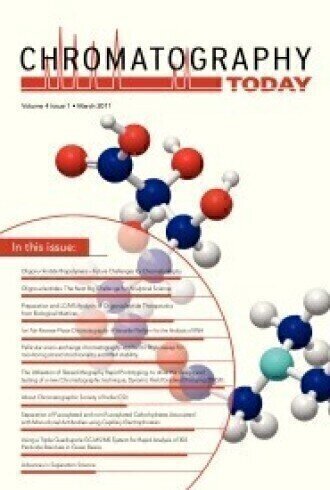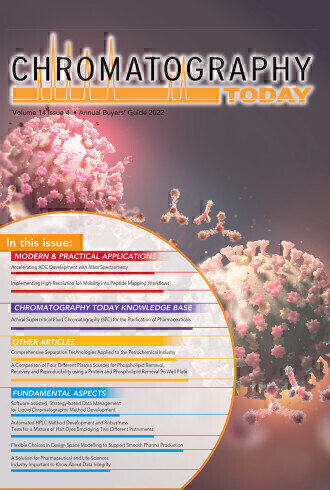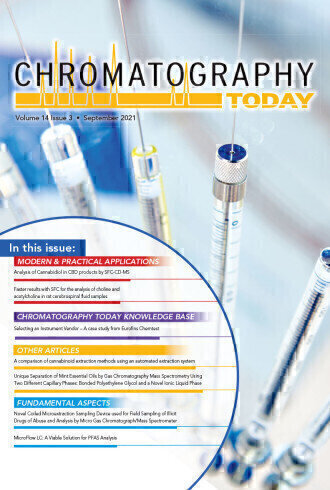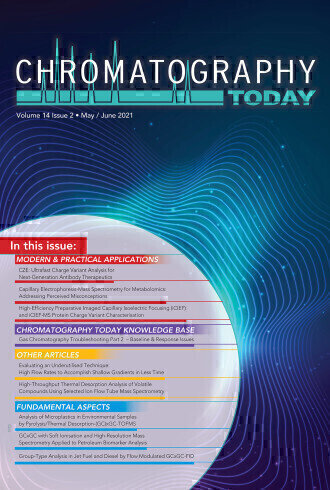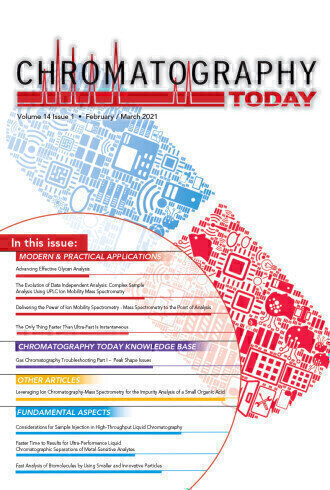Volume 4 Issue 1
Welcome to the thirteenth edition of Chromatography Today, with the theme for this edition being “Large Biological Molecules”.
For such compound types, their separation and purification has always been an active area for bio chemists who have over the years perfected the large low pressure separation technologies primarily based on size exclusion, affinity chromatography and ion exchange chromatography.
In the past few years however, we have seen a rapid increase of interest from the major pharmaceutical companies, as they move away from their “heartland” of small molecule science, and seek to exploit the potential of products based on biological sources such as recombinant proteins and monoclonal antibodies. These “new biopharmaceutical” products based on platform technologies offer a whole new challenge to separation scientists in their characterisation, purity determination and analysis of their impurities.
In this edition we concentrate primarily on one of the major growth areas: that of therapeutic oligonucleotides, typically: antisense, aptamers, micro RNA and small interfering RNA. The opening article by George Okafo provides an excellent overview of the analytical challenges faced by the industry and the approaches based on chromatographic methods to characterise the many impurities found in such products. The analytical challenges of RNA separation and analysis are tackled using novel ion-pair reverse phase chromatography in conjunction with non-porous polymeric and monolithic capillary columns in the paper from Mark Dickman. RNA is also the topic for Jim Thayer and Ken Cooke who use pellicular ion exchange chromatography to evaluate strand stoichiometry and RNA stability. As is the case we chromatographers reluctantly require some help from spectrometry and the MS link techniques are described in the article from Mike McGinley. Not surprising as stated in the last edition of Chromatography Today, electrophoretic techniques are being used to characterise these types of compounds. With this in mind we have included an application note from Beckman on the separation of carbohydrates associated with monoclonal antibodies using capillary electrophoresis.
As can be seen from the many articles, large biological molecules are both complex in structure and structurally very similar, can often be multiply charged, and truly offer a challenge to chromatographers. To gain an appreciation of the work currently on going in this area see Richard Houghton review on the recently held Chromatographic Societies meeting held at GSK Ware “ Oligonucleotides : The Next Big Challenge for Analytical Science”.
Previous Digital Editions
Digital Edition
Chromatography Today - Buyers' Guide 2022
October 2023
In This Edition Modern & Practical Applications - Accelerating ADC Development with Mass Spectrometry - Implementing High-Resolution Ion Mobility into Peptide Mapping Workflows Chromatogr...
View all digital editions
Events
Apr 28 2024 Montreal, Quebec, Canada
May 05 2024 Seville, Spain
May 15 2024 Birmingham, UK
May 19 2024 Brno, Czech Republic
May 21 2024 Lagos, Nigeria
